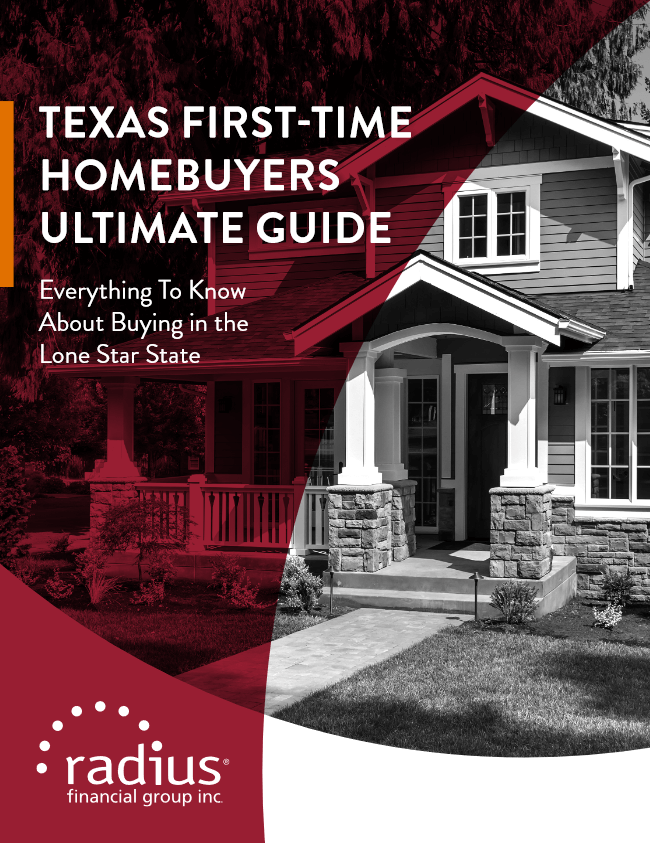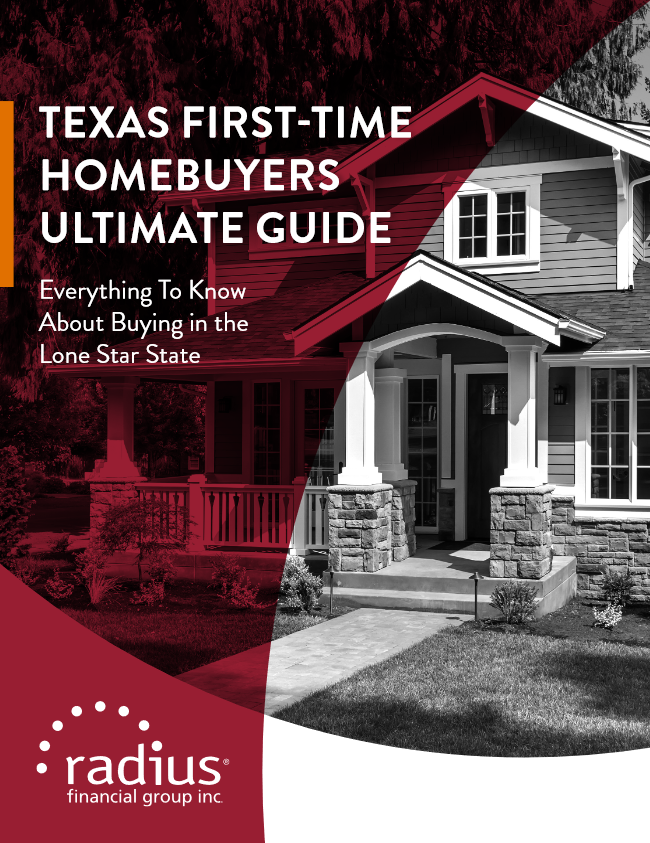There are a few steps you should take to make sure you’re in an ideal position to put an offer on the home of your dreams when you find it.
If you plan to take advantage of a Texas down payment assistance program, you may be required to complete an approved homebuyer education course before closing on your mortgage loan.
Such a course typically costs between $35-$99 and provides a crash course on the home-buying process. You’ll learn:
- Money management tips
- The nuances of the mortgage loan approval process
- How to shop for a home
Here are our favorite homebuyer education courses by city:
Houston
- Avenue Community Development Corporation - HUD-Certified First-Time Homebuyer’s Classes: Eight-hour virtual or online courses in which you will review your finances, learn about the home-buying process, and receive an optional counseling session.
- The Credit Coalition The Fundamentals of Good Credit: Six weekly sessions totaling 15 hours where you will learn about financial management, the credit process, and the home-buying process.
- Fifth Ward Community Redevelopment Corporation Online Homebuyers Classes: Eight-hour online and virtual sessions where you will learn about the home-buying process and available assistance programs.
San Antonio
- Alamo Community Group Homebuyer Education: A workshop to help you figure out how to search for a home, make an offer, have the home inspected, and close on a home.
- Neighborhood Housing Services of San Antonio First-Time Homebuyers Class: Eight-hour, HUD-certified course split into two evenings that will help prepare you for buying a home.
- Framework Online Homebuyer Course: HUD-certified online course that discusses securing a mortgage, working with a real estate agent, placing an offer, and closing on a home.
Dallas
- Dallas Home Connection Homebuyers Club: Offers educational seminars for first-time homebuyers, as well as credit counseling.
- East Dallas Community Organization Homebuyer Education Classes: Free courses held every month that discuss the home-buying process.
- Innercity Community Development Corp. Homebuyer Education: Group classes that discuss budgeting, securing a mortgage loan, credit, and addressing neighborhood issues.
Austin
- BCL of Texas Homebuyer Education Course: Online course that helps prospective buyers figure out if homeownership is right for them, and learn how to shop for and maintain a home.
- Framework Online Homebuyer Course: HUD-certified online course that discusses securing a mortgage, working with a real estate agent, placing an offer, and closing on a home.
- Clearpoint Credit Counseling Solutions Homebuyer Education: Online homebuyer education and counseling that can help prepare you for the mortgage process and home search.
Fort Worth
- Housing Channel Online Homebuyer Classes: Offers a variety of classes and workshops that can prepare prospective homebuyers for the homebuying process.
- Clearpoint Credit Counseling Solutions Essentials for Buying a Home: Program to help prepare first-time homebuyers for the home-buying process and fulfill down payment assistance requirements.
- eHome America Online Homebuyer Course: Online course that discusses money management and the home-buying process.
El Paso
- Project Bravo Homebuyer Education Course: Ten-hour, HUD-certified program that discusses mortgage basics, debt repayment, and the importance of saving.
- Tierra Del Sol Homebuyer Education: Eight-hour course that covers money management, securing a mortgage loan, shopping for a home, and protecting your investment.
- El Paso Credit Union Affordable Housing Guide to Homeownership Course: Program to help prepare first-time homebuyers for the home-buying process and fulfill down payment assistance requirements.
Aside from gathering the requisite knowledge, you should also make sure you’re in a good financial position to purchase a home right now. Take a look at your current income, savings, credit score, and debt-to-income ratio, and then consider whether you feel confident adding a mortgage to your plate.
Know Your Credit Score
If you have a low credit score, it could be difficult to secure a mortgage loan. Lenders want to feel confident in your ability to repay the money they lend you, and a credit score is one way they gauge how big of a risk you are. If you’re hoping to get approved for a conventional mortgage loan, you should aim to have a score of 620 or higher, although you can still get approved with a slightly lower score if you put down a larger down payment or agree to a higher interest rate. You could also see whether you qualify for a government-backed mortgage, such as an FHA, USDA, or VA loan, which typically allow for lower credit scores.
If you don’t know what your credit score is, there are a few ways to check it. If you have a credit card, you can likely see an estimate of your score by logging on to your customer account. Otherwise, you can request your credit score once annually from the three major credit agencies:
What information you should have ready:
- Name
- Social Security Number
- Current and previous addresses
- Date of birth
- Telephone number
If you’re not in a rush to buy a Texas home and you have a low credit score, you might want to spend some time boosting your score so that you can get the lowest possible interest rate on your mortgage.
Here are a few ways to boost your credit:
- Set up automatic payments on your credit cards to avoid late payments.
- Use your credit card for fewer purchases or increase your credit limit.
- Avoid opening new lines of credit that require a hard credit check.
- Don’t make any major purchases, such as a new car.
Calculate Your Debt-to-Income Ratio
Your debt-to-income (DTI) ratio is the percentage of your monthly income that goes toward paying off debts. Those debts can include student loans, car payments, minimum credit card payments, and your future monthly mortgage.
You can calculate your debt-to-income ratio by adding up all of your monthly debts and dividing that number by your monthly income. For example, if you make $5,000 a month and your monthly debts add up to $2,000, your DTI would be 40 percent. In order to get approval for a conventional loan, you typically need an after-mortgage DTI of 36 percent or less. Government-backed loans tend to be more flexible, with VA loans requiring a DTI of 41 percent or less and FHA loans requiring 43 percent or less.
Although you can certainly purchase a home while carrying debt, you may want to wait until it’s manageable before adding a mortgage to your monthly bills.
Saving Up for Down Payment and Closing Costs
Many prospective homebuyers struggle to save enough money for a down payment, which is typically 3-20 percent of the home’s purchase price. If we use the average Texas home value of $213,036 as an example, a 20 percent down payment would be approximately $43,607, and a 3 percent down payment would be $6,391. People sometimes aim to put down 20 percent in order to avoid paying for private mortgage insurance, but putting down less than 20 percent can be a smart move if that keeps you from draining all of your savings. You ideally want to have some savings left over after the purchase in case any unexpected maintenance issues or personal emergencies arise.
In addition to the down payment, you also need to cover closing costs, which typically cost 2-5 percent of the loan amount. Considering the average Texas home value of $213,036, closing costs could be anywhere from $4,260-$10,651.
Closing costs include things like:
- Application fee: Cost of processing your loan request and includes a credit check. Costs vary by lender.
- Loan origination fee: Charge for preparing and evaluating your mortgage loan (typically costs 0.5 percent of the loan amount).
- Appraisal fee: Cost of having the property appraised to make sure the price is in line with the home’s value. Typically costs $300-400.
- Property taxes: Typically pay two months’ worth of county and city property taxes at closing.
- Title fees: Title search and insurance costs for the purpose of ensuring the seller actually owns the property.
- Home inspection costs: Often required by the lender to make sure the property is structurally sound. Typically costs $300-500.
- Homeowners insurance: The purchase of homeowners insurance is often required by closing day to ensure the property is covered in case of damage.
To get a better idea of whether you can afford a mortgage right now, plug your information into a mortgage and payment calculator. If you’ve assessed your finances and feel confident that you can afford to buy a home, the next step is to meet with a lender.





